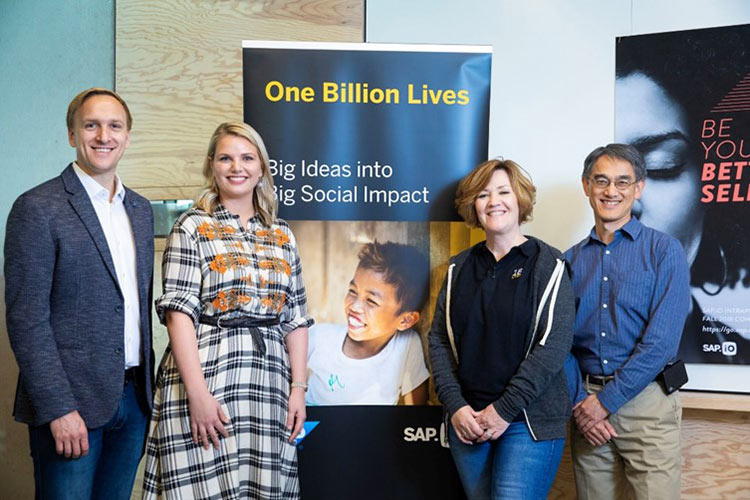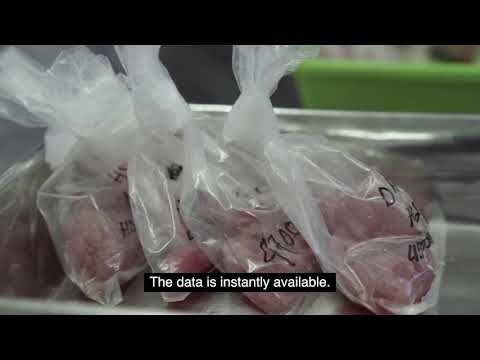
IBM MaaS360 with Watson Among First-Ever Android Enterprise Recommended EMM Solutions
January 16, 2019
SAP One Billion Lives Initiative Chooses Three Ventures from 2018 Cohort
January 16, 2019Digital transformation requires readiness across all functions of an organization, strategic planning, executive commitment, and precise and calculated execution in order to drive sustainable results. But none of this can be achieved without a key element: people. Every company has its own unique journey for transforming its organization, technology, and culture. To give you an example, I want to take you through Acuity Brands’ digital transformation story.
Daniel Goldblatt, chief human resources officer of Acuity Brands, recently participated in a webinar with Kyle Lagunas, research manager for Emerging Trends in Talent Acquisition and Engagement at IDC. The conversation – Acuity Brands: Driving Digital Transformation in HR for Its Total Workforce – focused on how Acuity is leveraging SAP’s extended enterprise workforce solutions to transform its business. Acuity’s digitalization journey is fascinating, with takeaways for companies around the world, so I spent some time with Goldblatt to learn more.
Q: Can you tell me about your journey with SAP SuccessFactors? What were some of the differentiating factors that helped you and your organization decide?
A: We started working with SAP SuccessFactors about two years ago, following our decision to part ways with our previous provider. It seemed like the process was going to be painful, so, as I started to consider which provider I was going to move forward with, I appreciated the importance of becoming familiar and being compatible with my vendor contact and their team. This was important to ensure that once we got past the “honeymoon phase” and got into the nitty gritty of real life, the provider was going to support us down the road. As we weighed the pros and cons of all potential providers, SAP SuccessFactors became the obvious choice for us.
Q: That is great to hear. How has Acuity been impacted so far from a business standpoint?
A: Previously, we were an HR business partner organization, and we focused largely on how to drive business results through people assets and connect to our business leaders in a way that drove the dynamics of business practices. I think that as we have evolved into a more global and technical organization, we have shifted focus towards a cultural transformation as well. SAP SuccessFactors’ powerful data analytics capabilities allow us to articulate who we want to be as a company, whether it be talent management, culture creation, succession planning, or anything in between. All of this is terribly exciting for us.
Q: That does sound exciting! Would you be able to talk a little bit about your personal journey? How were you able to engage with the leadership team during this process?
A: We were a durable goods manufacturer and we converted ourselves into a high-tech solutions provider, meaning we needed to evolve who and what we were. Acting as an HR organization for durable goods manufacturing is very different from acting as an HR organization for a software technology company. Changing the dynamic within an HR organization meant changing the way we utilize systems, the way we brand to employees, and the way we brand to the external market – all of which were quite critical. The only way to be successful in an evolution like that is if your organization possesses a set of tools that is consistent with high-tech solutions. SAP SuccessFactors really is head and shoulders above its peer group in that space.
Q: In terms of your roadmap and the journey in general, what were some of the surprises or benefits that you didn’t anticipate?
A: I think that the process of justifying this type of system to a board of directors and a CEO is always a challenge. We are an organization that drives on efficiency and innovation, so it really doesn’t make sense to automate and spend money on a system. Once we got to a place where we really felt like our processes were effective enough that we can then justify the expense in working with an organization like SAP, it really was imperative in making that business case resonate with our board and our CEO. It was a testimony to the relationship that we were going to begin, and it spoke volumes to how it was going to manifest itself going forward.
In part two of this series, we will dig into the next steps in the implementation process for Goldblatt and his team at Acuity.





